It’s not just paranoia: Driving at night is actually more dangerous. Fatal accidents are three times more likely at night compared with the daytime, according to the National Highway Traffic Safety Administration (NHTSA).
The main reason for this—not surprisingly—is that we can’t see as well in the dark, says Alex Epstein, director of transportation safety at the National Safety Council: “You see less of the road ahead of you and have less room and time to stop.” Ironically, some kinds of light—like the glare from too-bright lights—can compound the problem.
But other factors add to the challenge of driving at night. Here are 12 tips that could help reduce the risk.
1. Be Extra Defensive
Drinking and driving poses a bigger risk after dark, according to NHTSA, which has found that the rate of fatal crashes involving alcohol impairment is almost four times higher at night than during the day. Of course, never get behind the wheel after drinking, no matter what time of day it is (don’t drive while distracted either); but at night, it’s a good idea to put your defensive-driving instincts on high alert.
2. Combat Fatigue
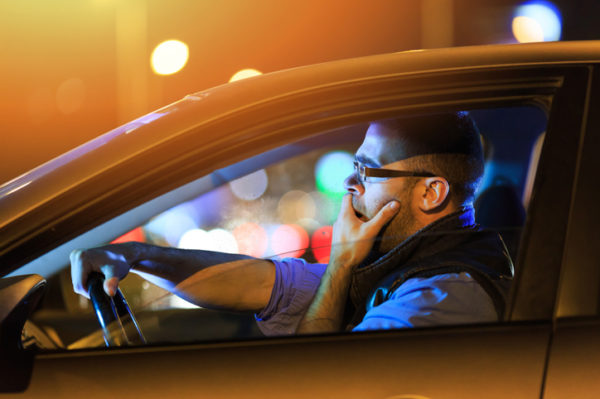 Drowsy-driving crashes are most likely to happen between midnight and 6 a.m., says NHTSA. So be aware during these hours that there may be sleepy drivers on the road—and keep yourself alert. Have some caffeine, pull over in a safe area to get some rest, or stop for the night. Some drivers have reported other activities that can help: turning the radio on (not too loudly); rolling down the windows periodically for fresh air; and talking or singing to yourself.
Drowsy-driving crashes are most likely to happen between midnight and 6 a.m., says NHTSA. So be aware during these hours that there may be sleepy drivers on the road—and keep yourself alert. Have some caffeine, pull over in a safe area to get some rest, or stop for the night. Some drivers have reported other activities that can help: turning the radio on (not too loudly); rolling down the windows periodically for fresh air; and talking or singing to yourself.
3. Clean Up Your View
Dirty or damaged windshields can scatter light and potentially increase the effects of glare, according to NHTSA. The group also reports that dirty or damaged headlights can decrease your visibility and cast glare onto oncoming drivers. So clean headlights and windshields regularly; you can use a special cleaning kit for headlights.
4. Avoid Two-Lane Highways
NHTSA says two-lane highways may be a “worst-case scenario” for nighttime glare, due to oncoming cars’ headlights, lower overall light, and the fact that these roads tend to have more sharp curves and hills than a freeway. If you can, take a safer route at night.
5. Slow Down
Speeding-related crashes account for 37 percent of nighttime-driving fatalities, says NHTSA—compared with 21 percent of those during daylight hours—due to lower visibility and shorter reaction times. For example, your headlight typically shines 160 feet in front of you, but even at 40 mph, you need 190 feet to stop. Adjust your speed to take conditions like visibility into account, says Russ Rader of the Insurance Institute for Highway Safety (IIHS).
6. Angle Your Headlights Correctly
If the beams tilt down too much, you’ll lose some of the illumination you need while driving. But if they tilt too high, they can blind oncoming drivers. Some states’ annual inspection tests include checking the headlight angle—but otherwise, take the initiative to make sure yours are pointed correctly. “This isn’t usually a DIY project,” says Rader. “Consumers should go to their car dealer or a repair facility for assistance.”
7. Use High Beams When Appropriate
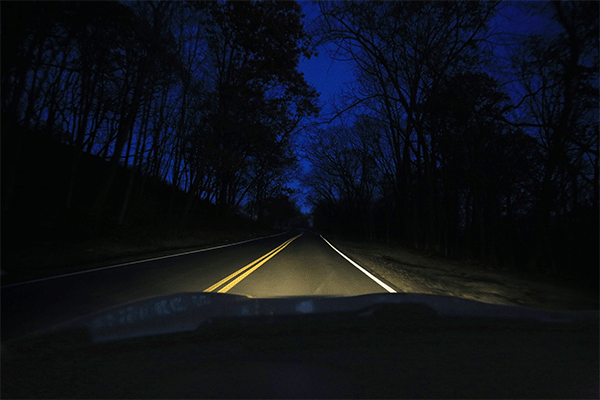 High beams are underutilized, says Rader, but can be very helpful in rural areas or on open roads. Just remember to dim them when you’re within 500 feet of an oncoming vehicle (so you don’t temporarily blind the other driver), and don’t use them if you’re following another vehicle. If you’re in the market for a new car, Rader recommends looking for adaptive lighting systems that automatically adjust your high beams depending on the presence of other cars.
High beams are underutilized, says Rader, but can be very helpful in rural areas or on open roads. Just remember to dim them when you’re within 500 feet of an oncoming vehicle (so you don’t temporarily blind the other driver), and don’t use them if you’re following another vehicle. If you’re in the market for a new car, Rader recommends looking for adaptive lighting systems that automatically adjust your high beams depending on the presence of other cars.
8. Tweak Your Inside Lighting
If your dashboard lights are too bright, glancing from the dashboard to the dark road ahead can be disorienting, says the NSC’s Epstein. “Dim the interior lights at night, so that critical controls remain easily visible but not distracting,” he recommends. “And use your visors at night to shield you from outdoor street lighting and glare.” Many new cars, he adds, have mirrors that automatically dim the reflections from bright light.
9. Look In The Right Direction
While you should always keep your eyes on the road, avoid a fixed gaze and never stare at oncoming headlights, says Epstein. When approaching an oncoming vehicle, avoid being blinded by its headlights by shifting your eyes down and to the right, using the right edge of the road or lane markings as a guide to stay on track. Lift your gaze back up when you’ve passed the oncoming vehicle.
10. Watch For Wildlife
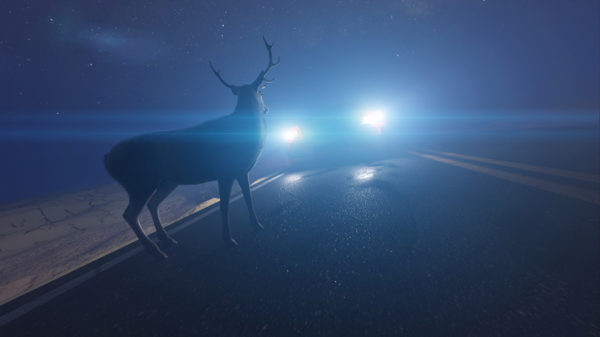 Collisions with deer often happen at dusk or at night and are more common from October to January. Your high beams can help you spot an animal’s glowing eyes. When you see them, the safest way to avoid an accident is by slowing down and stopping—not by swerving.
Collisions with deer often happen at dusk or at night and are more common from October to January. Your high beams can help you spot an animal’s glowing eyes. When you see them, the safest way to avoid an accident is by slowing down and stopping—not by swerving.
11. Take Care Of Your Eyes
Get your vision checked every year, suggests the NSC; glare becomes more problematic for people as they age. You may also need a different prescription at night.
12. Test And Use Your Lights
Regularly test all your lights, including low beams, high beams, daytime running lights, turn signals and brake lights. And make sure to use your headlights to stay visible; not only do you need to turn them on when it’s dark, but you should turn them on in adverse weather conditions like rain, snow and hail.
Never be in the dark when it comes to your auto insurance. When you keep the GEICO Mobile app on your phone, you can have easy access on the go to roadside help, digital ID cards and more. Download GEICO Mobile today.
Read more: Heads Up! Are You Driving Drowsy?
By Katrina Brown Hunt

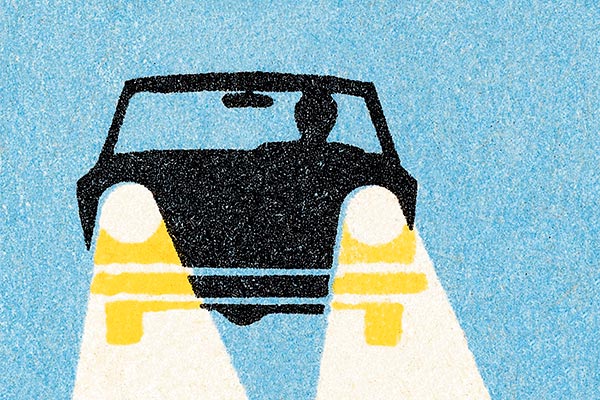


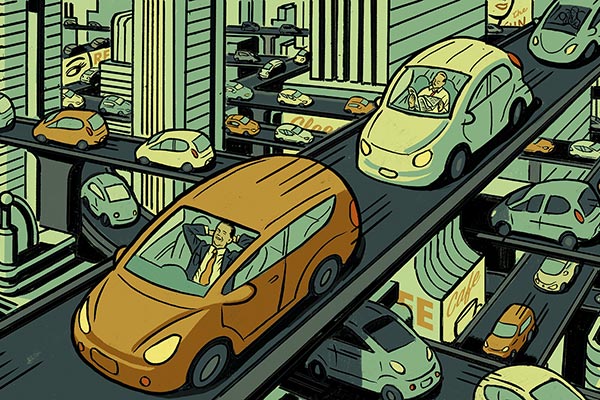
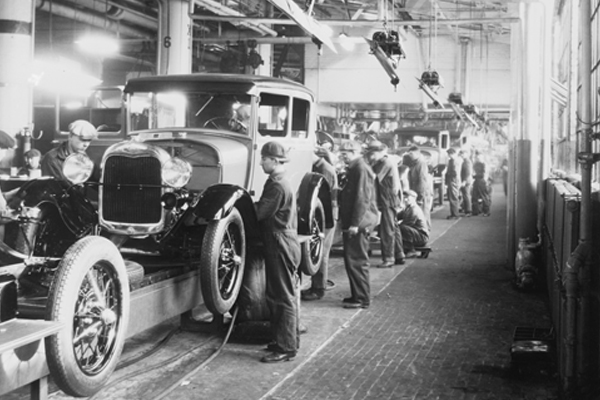
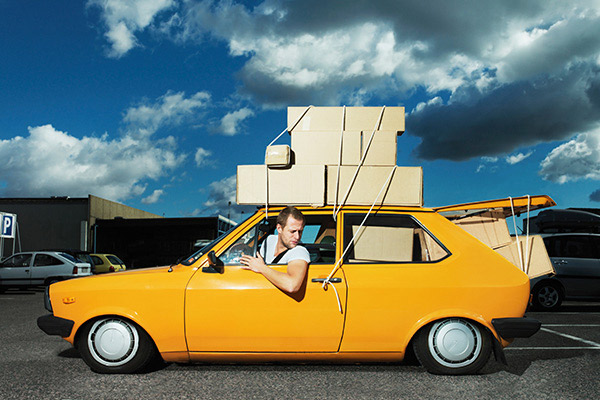
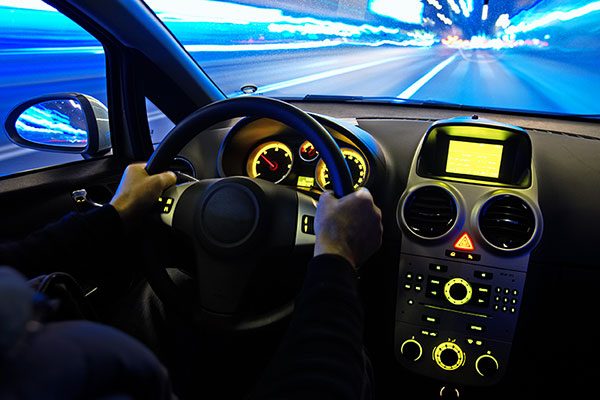

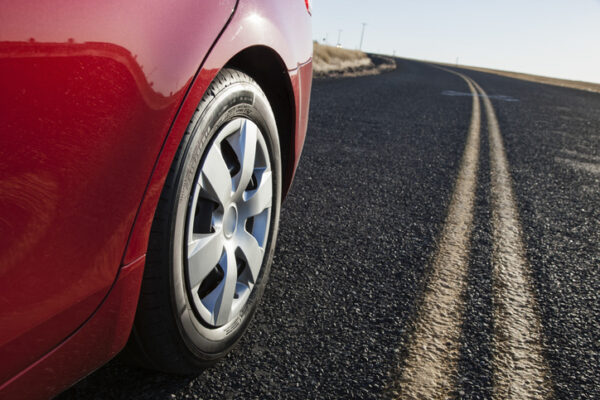
Lonnee says,
Thanks well worth the read. Going over what appears to be simple measures can only improve ones ability to be safe.
Thank you
Melissa Fowler says,
Thank You! I appreciate the tips you shared very informative.
Phillip Cooley says,
Thanks, good advise.
Maximo says,
Thank you for the tips
Mark says,
Try those “tac glasses” good night to me from tv ad???
Google them
Im gonna try em thier cheap
tim says,
I have a pair of these glasses with the amber (yellow) lenses. They are
the hard to find type that go over prescription glasses and they are very effective. There is some dimming, but over several years of use (in some very bad New England weather)i have found them to be the difference between driving with assurance & more confidence as compared to driving with stress in constant panic mode. Best thing i ever did was to start driving a vehicle higher off the road than a car like a truck or SUV.
Jim says,
Is there a recommended type glasses that lessen the glare of on coming head lights during night driving?
Pat says,
Thanks for the BrushUp/ review. So easy to drift into a bad habit but just pay attention & be sharp!
Igor E Sedor says,
Thank You for the Tips
Barney Goodman says,
As an Optician, I’ll recommend you ask your Eyecare Professional to ensure you have Anti- Glare lenses to see better at night.
Joseph Swimmer says,
Very useful tips I enjoyed each and everyone @
Patrick says,
if only ALL car insurance companies would make a rule of their own (no need for U.S. government interference here), to subject ALL their policy holders, to take the driving course/test I took on line,twice so far, it would be AWSOME !
I drive less these days, since my early retirement, BUT, when I do, and I am “OUT THERE”, I simply wonder WHERE and HOW LONG, did some of these drivers learn how to drive ?! If I was a police officer, on any given day I drive , either for a short and/or long trip around town, I could easily ticket so very many drivers, so very many , …. Thank you for the refresh course herewith …
Mary says,
I agree, the drivers are absolutely speeding and darting in and out of traffic all the time. Speed is never checked or the cause of a fender bender or accident as almost everyone speeds. The police are almost hands tied because of a law that makes anyone changing lanes guilty no matter if lots of room for the other party to avoid hitting someone or say they had to be speeding as there was ample time to avoid hitting/accident because they know they can make a claim if someone is changing lanes.
The tips were good
Pam says,
The New bright Head lights need to be banded. They are just to bright for the on coming traffic.
KAT says,
YOU ARE ABSOLUTELY CORRECT, I HAVE TO SLOW DOWN WHEN THOSE BRIGHT WHITE AND BLUE HEADLIGHTS ARE COMING. THOSE SHOULD NOT BE LEGAL.
Rose says,
I completely agree!
John Morin says,
So true thanks for the information
we avoid night driving …..
Barbara Edwards says,
All of the information was very help full i am also going for drivers safety course.
Ruth T. Bates says,
Thank you for posting such valuable information as the 12 Safety Tips for Night Driving. I will make certain that all the lights on my vehicle are responding properly.
Emmanuel says,
Thank you very good and helpful
james says,
Very educative
RAMESH PATEL says,
this is great advise, please give more special for +65 age people. by taking care by this we can have a great helps and peace of mind. thanks
Christine Beene says,
The safety tips are helpful